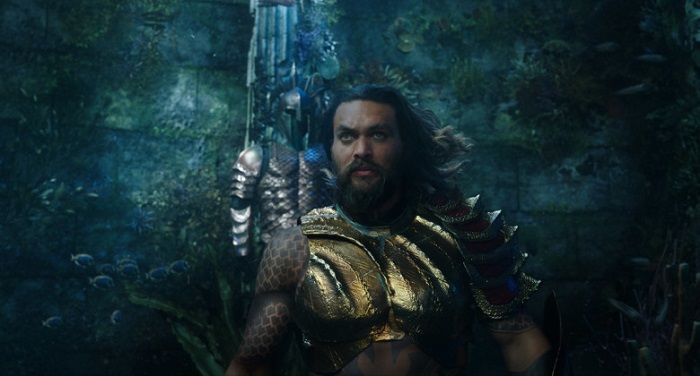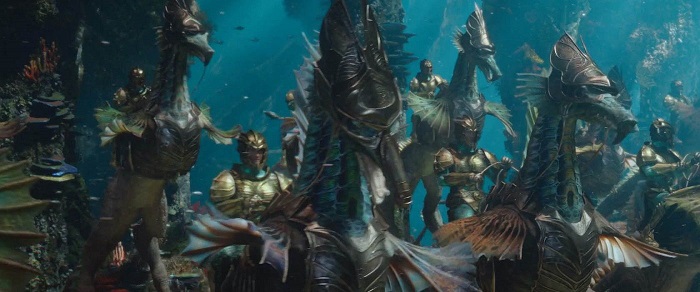
James Wan’s Aquaman was a welcome release for the DC Universe and it’s disgruntled fans. Not only was it’s story gripping, but the movie also turned out to be a breath of fresh air from a VFX’s vantage point.
Shedding DCEU’s peculiar dark, dolorous themes for more bright and colorful palette, Aquaman served a visual nirvana. Also the CGI-driven creatures such as the Trench, Sea Lobsters and Sea Dragons were beautifully crafted and perfectly complemented the plot.
Aquaman also riposted Marvel’s Wakanda with a pristine wonderland of its own in Atlantis. VFX outfit Industrial Light and Magic were at the credits for the creation of the aquatic civilisation, and VFX supervisor Jeff White takes us through the rigorous process that went into it’s making.
He said, “Atlantis was an incredibly challenging environment. The aesthetic James was looking for was both streamlined and high tech, while being based on organic creatures and structures. Each of the over 7000 buildings that make up Atlantis are highly sculptural and full of lights, translucency, and even movement.
“Our real struggle was that we couldn’t just build a city and stick a camera in it, which would have been overwhelming visually. Instead each shot is a hand crafted layout that uses lighting and atmosphere to create separations between the buildings and traffic.”

The sprawling kingdom of Atlantis was rich in aquatic flora and fauna, and White says it was the key to bringing the environment alive. “Because so much of the image was CG, we relied on always putting natural materials like swaying kelp or swimming schools of fish to ground the image in reality. Animals also became a huge part of the third act, when they join the battle against Orm’s army.
“For that sequence we developed hundreds of sea life assets and the real challenge was to figure out how they would do battle against ships and soldiers. We had a lot of fun putting those animation vignettes together.”
An iconic moment in Arthur Curry’s adventures was the full throttle battle between him and his half-brother Orm on the ‘Ring of Fire’. And even though it didn’t really end up in Arthur’s win, the whole setting was eye-catching to say the least. “The ring of fire started as amazing concept art,” said White. “It was a real challenge trying to find the right color balance to achieve all the vibrant lava color James wanted while keeping it looking realistic.

“In the end, we employed a cheated version of underwater physics and just concentrated on what made great looking images. In that sequence, we also developed the boba time effect where the tridents leave behind a concussion ripple as they fight their way around the arena.”
Aquaman culminates with a similarly fierce fight but naturally on a much larger scale. White feels working on it’s visuals were the most challenging aspect of the movie.
He said, “There were hundreds of shots with lots of complex interdependencies between departments. Animation would feed crowd simulation and hair simulation. Crowd simulation would feed the FX department to generate all the lasers and explosions that were needed to create interactive light on the main characters. Not to mention that a two mile long creature comes bursting through the seafloor to add to the mayhem!”

But on the whole, White feels this entire project really pushed the team to the edge and tested every department. “No job was easy from complex body match animation, to comps full of thousands of elements. But the result is a tribute to the hard work and dedication of the incredible artists at ILM,” he exclaimed.
“James [Wan] is amazing, we had so much fun working together. He pushed us to create a beautiful, vibrant magical world for audiences to experience, and clearly he found an aesthetic that connected with audiences,” said White, recalling his experience of working with the director.
Based on DC Comics, Aquaman earned $1.15 billion at the global box-office to become the highest grossing movie ever in DC’s history.

